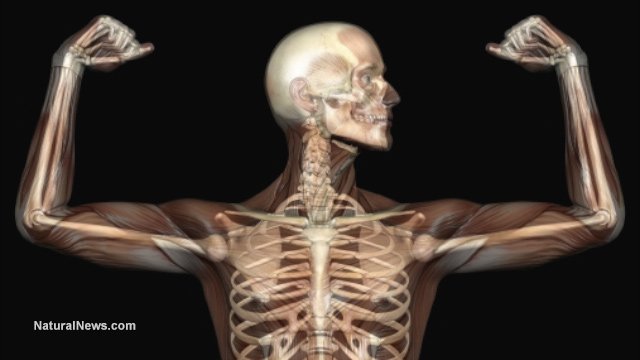
Advertisement
Three different – and independent – groups of researchers have designed extremely powerful artificial muscles. They claim that the muscles can lift 1,000 times their own weight.
The synthetic muscles are designed around either coiled or coiling fibers that can, much like natural muscles, stretch and contract.
These artificial muscles could be used for various industries. Manufacturing industries could use them for their robotics; medical technology industries could use them for future prosthetic limbs; and the military could use them to help create super soldiers that are 1,000 times stronger than their opponents. The researchers said that they may even be used by the fashion industry to create smart clothing that can react to the weather. (Related: Limb regeneration: Scientists have discovered that the human brain can remap nerves and motor pathways to artificial limbs.)
Artificial muscles can be made out of inexpensive material
All three teams developed their artificial muscles using the same guiding principle: that their artificial substances should be able to stretch like muscles do. This idea was developed and pioneered by Ray Baughman, a nanotech expert at the University of Texas at Dallas, and his colleagues. They published their findings in the journal Science.
Baughman and the other researchers found that even household materials such as sewing threads and fishing lines could be twisted to create a structure similar to muscles. These artificial structures could even lift weights that were 100 times heavier than what natural muscles can normally manage.
Using this idea, Baughman and his team developed stronger fibers using materials that were relatively expensive, such as bamboo or silk. This material was coated with a special sheath that could respond to electrochemical or temperature changes. The response would then make the muscle either move or contract as needed.
Baughman stated that this material can be used in the creation of smart clothing. They demonstrated this in one experiment by carefully knitting the artificial muscle fibers into a textile that, because of the fibers, were able to respond to moisture by becoming more penetrable.
“You could imagine such a textile could be more open or more insulating,” said Sameh Tawfick of the University of Illinois at Urbana-Champaign. Tawfick was not part of Baughman’s research team.
Other researchers put their own twist to the artificial muscle fibers
Jinkai Yuan, materials scientist at the University of Bordeaux, led the second research group. Yuan and his colleagues created their own artificial muscle fibers using a polymer and graphene – a material that is stronger than diamond.
The third group was led by Mehmet Kanik, a material scientist at the Massachusetts Institute of Technology. Kanik and his colleagues created a material that would coil itself up spontaneously, similar to a plant’s tendrils. Kanik and his team demonstrated their artificial muscles by creating an artificial bicep. When heat was applied to the fibers, it was able to lift a small dumbbell.
Kanik and his colleagues believe that their fibers can lift items up to 650 times their own weight and have a resilience over several thousands of expansions and contractions.
Tawfick claims that artificial muscles have a long way to go before they can be used by private industries. The efficiency of the artificial muscles still needs to be greatly improved. Despite their strength, only around three percent of the energy put into the artificial muscles is used by the fibers. The rest, according to Tawfick, is lost to heat.
Once the research teams can solve this efficiency problem, Tawfick believes that the artificial muscles can provide cheaper and simpler alternatives for many bulky electronic motors used by many devices today.
Sources include:
Advertisement
Advertisements
















